Then & There: Sidesaddle Mysteries
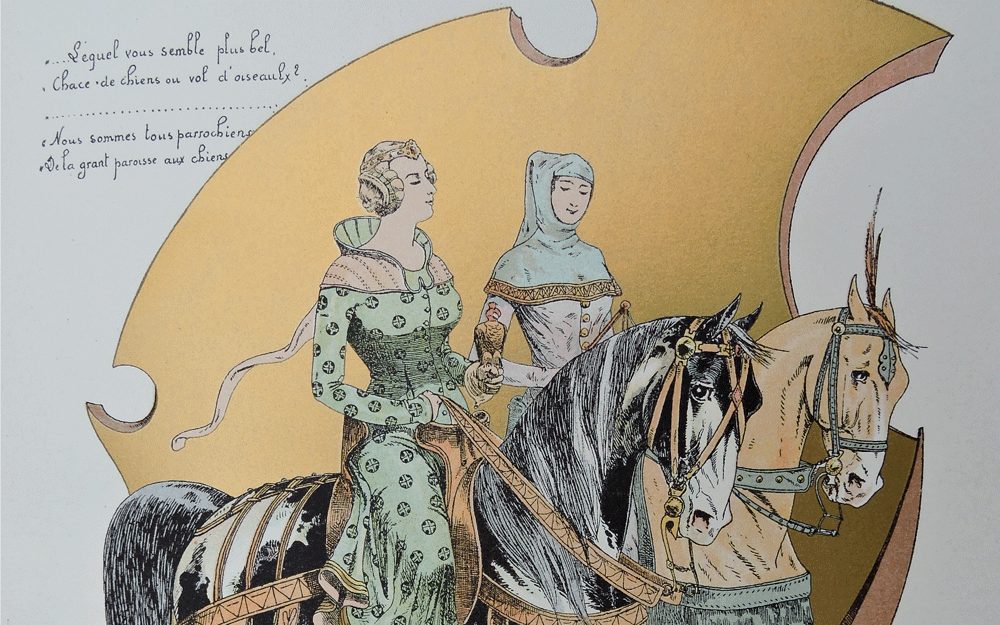
Story and photos by Richard Hooper
The modern sidesaddle is a culmination of innovations that evolved over centuries. It came about by women seeking more comfort and control over the horse, to look forward and proceed at a pace beyond an amble, to jump — and, perhaps, to show a bit of leg.
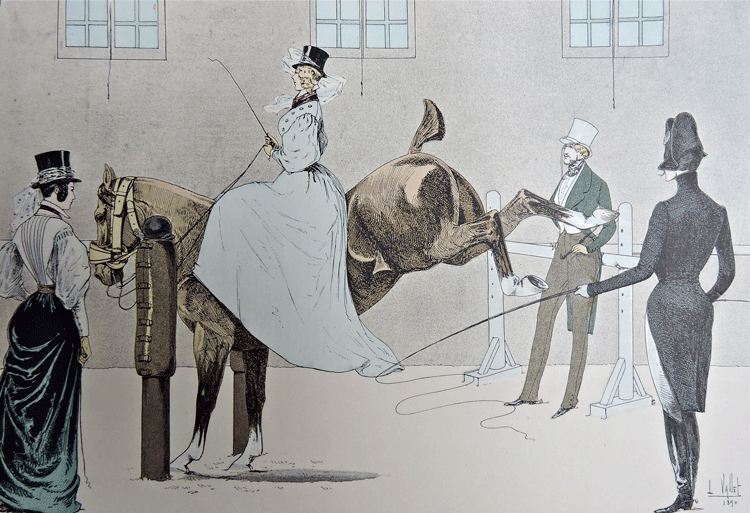
Mary of Burgundy (1457-1482) is credited as being the first woman to ride aside while looking forward. During Mary’s time, women rode either astride or facing totally sideways.
The customary sideways saddle had a back support with a footrest (a planchette or plank) suspended from one side of the saddle. The rider’s shoulders would thus be parallel to the spine of the horse.
Legend has Mary hooking her leg over the pommel of a man’s saddle. However, she could have very acceptably and simply ridden astride.
Mary could have also been riding what can be thought of as a dual-sex saddle that was in use at that time. It had a high pommel and was designed so that it could accommodate either stirrups on both sides (for riding astride) or the totally sideways saddle with a planchette.
A keen hunter and horsewoman, she could have become frustrated during the chase (albeit a slowly paced one) with her feet on the planchette and in a moment of inspiration (necessity is the mother of invention) hooked her right leg around the pommel of such a saddle — now, she could see what was going on in front of her! Her motivation remains a mystery and her technique appears to have not caught on.
It is about 100 years before the next step of note in the evolution of the sidesaddle. Catherine de’ Medici (1519-1589), married to Henri d’Orleans (later King Henri II), was Italian and generally disliked by the French court. She managed to ingratiate herself with Henri’s father, King Francis I, through wit, intelligence, dancing and — certainly not least — riding.
She hunted often with Francis and becamepart of an elite group of equestriennes known as the Petite Bande. Catherine also had to become an especially skilled rider to shine as brightly in that endeavor as Henri’s mistress, Diane de Poitiers.
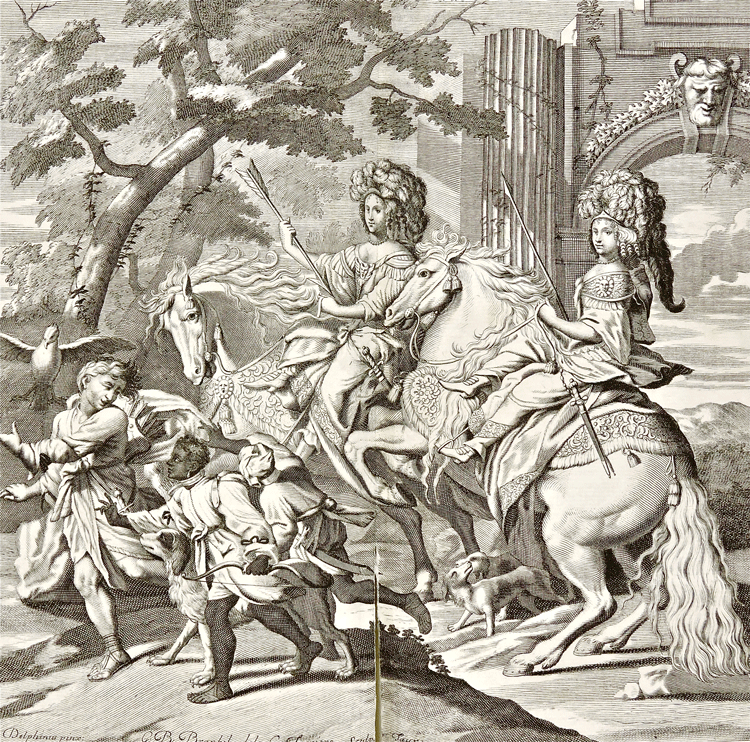
Like many others, Catherine took her falls — cracking her skull in one. Her rival, Diane de Poitiers, broke a leg.
The ill-fated Mary of Burgundy, while hunting with her falcon, fatally suffered a broken back when her horse fell and rolled on her. Some historians claim she was attempting to jump a ditch when the accident occurred.
French hunting saddles during Catherine’s time had a large, padded roll at the front. The roll could have a U-shaped depression in the middle, which Catherine could have had enlarged, into which she could hook her right leg. Not content with that seat, Catherine took a giant leap forward and added a second horn to the saddle.
It would be logical to conclude that it was for safety. However, historians generally agree that it was to help hold up her skirt, thus showing off a bit of her ankle, calf and colorful stockings that were in vogue.
Poor Catherine! The court could find little that it considered beautiful in her appearance, so she created the opportunity to display as much of her leg (by all accounts, considered quite lovely) as possible. Thus began the ascendency of the forward facing sidesaddle seat.
While riding aside came to dominate women’s riding, there were some startling exceptions of women riding otherwise. There are portraits of Marie Antoinette riding astride, as well as aside, and Catherine the Great is known to have commanded that women ride astride.
The last great innovation came in 1830, when Jules Charles Pellier, French riding-master, added the leaping head to women’s saddles. It is a third horn that allows an increased grip by the leg, especially in jumping.
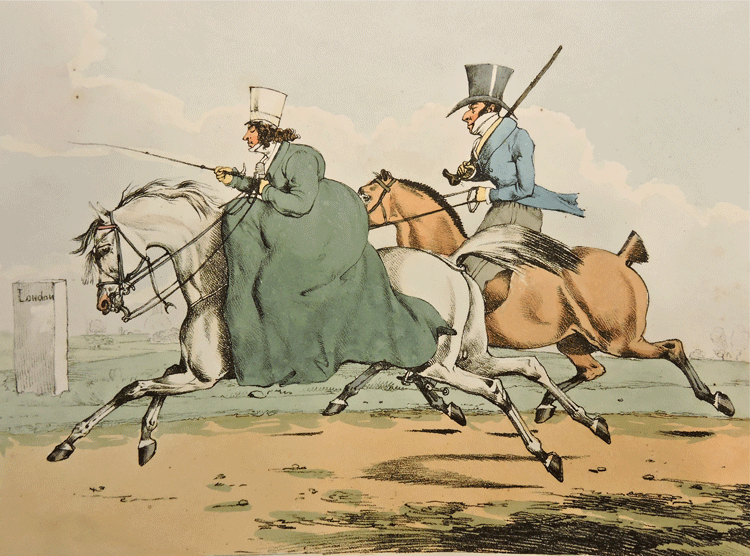
His idea, however, may have been inspired by an alteration to a man’s some 40 or so years earlier, when a leaping head of sorts may have been used by the English huntsman Thomas Oldaker. After suffering a broken leg, he added a curved crutch to the side of his saddle to wrap around the top of his thigh, giving him a firmer grip. It’s just another mystery.
Instructional manuals for riding aside began appearing early in the 19th century. Along with theories and instructions on riding and practical matters was advice on decorum. In “The Young Lady’s Equestrian Manual,” published in London in 1838, an anonymous author states that “for numerous reasons, which must occur to our readers, a lady should never be seen in the act of positively flogging her steed: such a sight would destroy every previous idea that had been formed of her grace or gentleness.”
While riding aside began to fall out of favor after World War I, it never became extinct. There is now a renaissance of interest and it is no mystery that much “grace and gentleness” will be on view in the always-popular sidesaddle classes at the Upperville Colt & Horse Show. ML
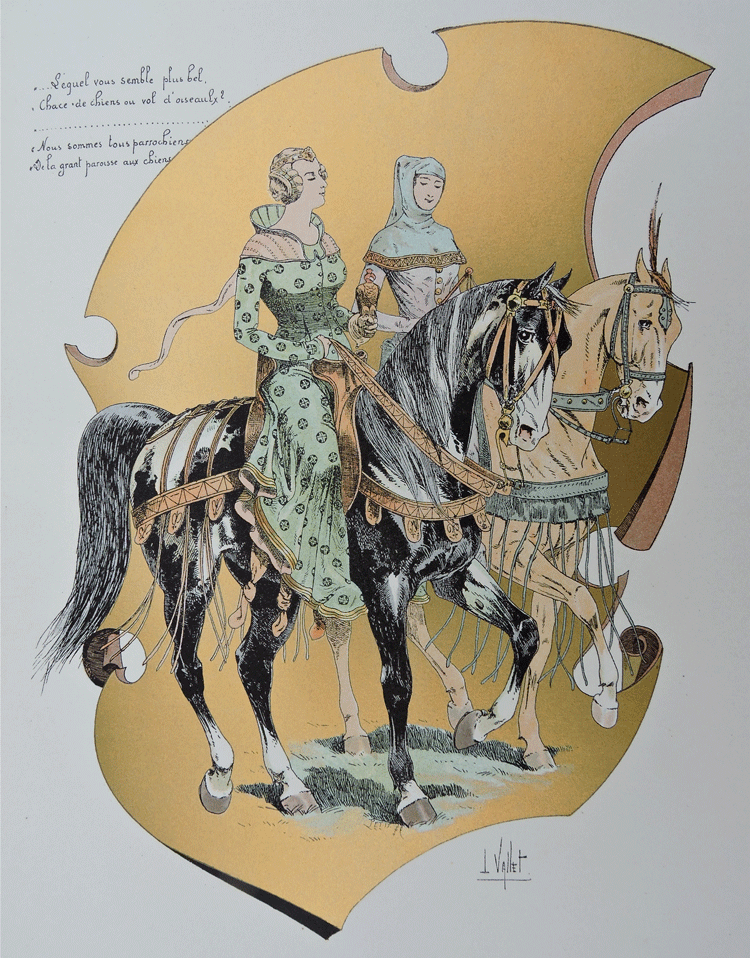
Richard Hooper is an antiquarian book expert in Middleburg. He is also the creator of Chateaux de la Pooch, elegantly appointed furniture for dogs and home. He can be contacted at [email protected].


